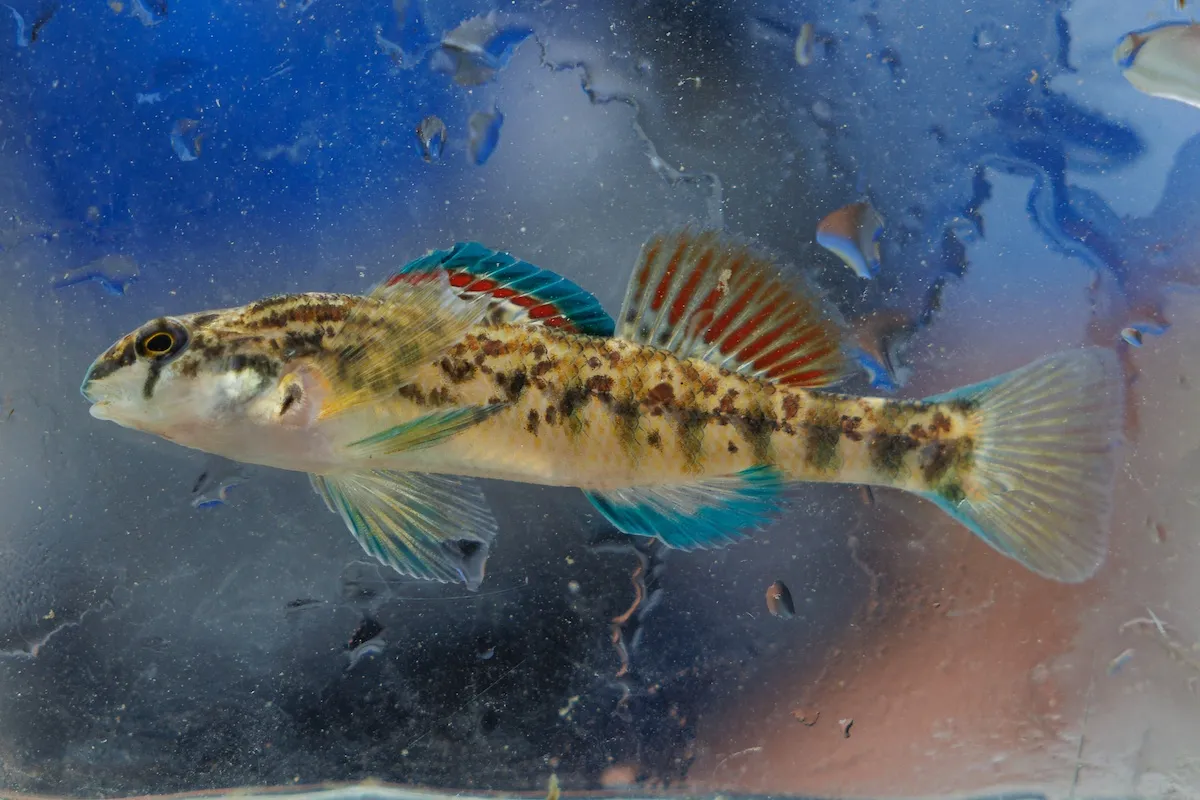Scientists at the Tennessee Aquarium Conservation Institute are sampling streams across the region in hopes of expanding the known range of a federally threatened darter.
The Trispot Darter (Etheostoma trisella) is a small freshwater darter that grows no larger than about 1.5 inches in length. Sporting three black dorsal saddles, a pale belly and a dark line below their eye, male Trispot Darters develop intense red-orange and green markings during their breeding season.
Trispot Darters’ range extends across Tennessee, Georgia and Alabama in the Coosa River drainage, but habitat fragmentation caused by man-made alterations of their environment — culverts, dams and reservoirs — has caused problems for this little fish. Barriers like these create unnatural blockages and inhibit the passage of fish throughout a river or stream. That spells big trouble for Trispots because of their distinc life cycle.
During the warm portions of the year, the Trispot Darter lives in the main stem of waterways like the Conasauga and Coosawattee Rivers. With the arrival of cold weather, however, they hit the underwater highway and make their way upstream.
“During the winter, when water temperatures drop, the Trispot Darter actually migrates up into these little spring seep and groundwater seep areas in order to spawn,” says Recovery Biologist Abbey Holsopple.
These headwater seeps are critically important to the Trispot Darter’s reproduction and the success of their next generation of offspring. Without access to these seep-fed streams, their numbers diminish.
Habitat fragmentation caused by human activity led to the Trispots’ apparent extirpation — that’s when a species becomes completely wiped out — in Alabama.


For 50 years, the species was believed extinct in the state until a survey discovered a previously unknown population. That discovery is partly why conservation scientists are undertaking the current effort to find more populations of these darters in other areas.
Clad in waders and equipped with a seine, dip nets and backpack electrofisher, scientists recently waded through the shallow waters of Sugar Creek, which flows into the Coosa River drainage. Their aim was to find Trispot Darters, which would add another location to the species’ known range. Working in partnership with the U.S. Fish and Wildlife Service (USFWS) and the Georgia Department of Natural Resources (GDNR), their findings will help inform best management practices and habitat improvement that will hopefully increase the fish’s abundance across its range.
This year, the team will survey at least 10 sites where Trispot Darters are not yet known to exist, and they will visit another 10 next year. The sites are chosen by experts because they share similarities with other habitats where these darters typically are found.
To find these elusive darters, scientists use methods developed by the USFWS and GDNR. They place a seine downstream to serve as a “block net” to prevent fish from passing. Next, they move a few dozen yards upstream and use an electrofisher — which delivers a mild electric current into the water — to stun and immobilize the fish, which are then collected by the block net.
The electrofisher does not harm the fish. Instead, it causes their muscles to briefly contract. This briefly inhibits their ability to swim for 10-15 seconds, allowing scientists to quickly net them by hand or collect in the seine downstream.
“An analogy I like to use to explain it to people is if you were to go to a physical therapist because you were having some muscle soreness,” Holsopple explains. “They might hook up these sensors to you that send little electric pulses through your muscles. The electricity that’s being put into the water is similar to that for the fish.”


Once they’re netted, scientists add the fish (and other aquatic organisms) to buckets of clean stream water. Within a few seconds, they’re back up and swimming.
After they’ve finished collecting from an area, the team sits down to identify, measure and record every species they collected before returning them to the water.
So far, biologists have visited five of this year’s selected sites but have yet to find any Trispot Darters. Nevertheless, Sugar Creek did prove surprisingly full of life. Their collection efforts produced a myriad of other species, including brilliantly colored Coosa Darters, Coldwater Darters, Stone Rollers, Striped Shiners, Hogsuckers, Sunfish and some Least Brook Lampreys. They also turned up aquatic invertebrates and even a few amphibians like salamanders and tadpoles.
Though it may sound disheartening not to find the species they’re seeking, every survey creates new data points that help inform the potential range of the Trispot Darter.
“Even though we haven’t found one yet, this is still really valuable data we’re gathering,” Holsopple says. “It’s expected that we might not find them at every site, but if we do find them, it’s like a celebration, because it’s added on to their typical distribution.”
